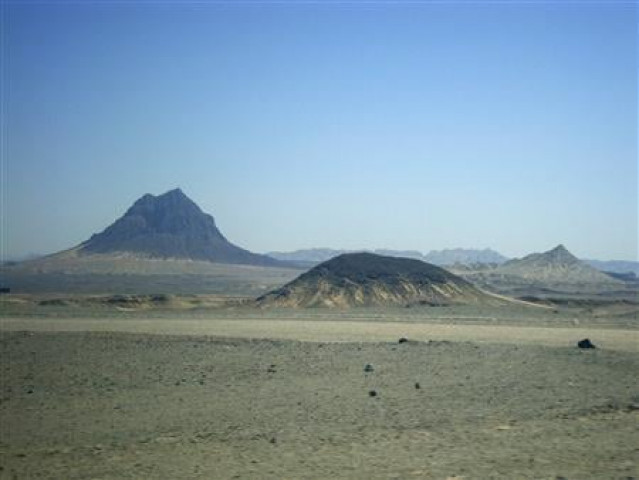Reko Diq in context of global copper mining regime
Stakeholders must understand international regime to deal with future contracts

PHOTO: REUTERS
The article discussed the causes, consequences and the way forward. It would be useful for the readers to get some insight into the Reko Diq project in the context of international mining regime and copper dynamics in the global market.
Copper is a relatively abundantly found resource around the world with resources for 200 years of consumption. Recycling has also contributed to the feeling of abundance as 41% of copper demand of the European Union (EU) member nations is met through recycling.
There are around 20 countries which produce an output of millions of tons per year. Chile is the largest producer with 5.5 million tons per year whereas China consumes 50% of the world demand. China is also among major copper producers with an output of 2 million tons per year.
Thus, there does not appear to be much ground for taking a tough stance on Reko Diq in this background of the wide availability of copper in many parts of the world. In fact, the copper concentration in the ore is not at the higher side and is ordinary. Most of the Pakistani minerals are true of low grade, be it coal, iron, and others.
International copper prices are quite variable. In 2002, these were at $5,000 per ton, which rose to $7,000 per ton in 2007 and peaked at $8,000 per ton in 2008. Thereafter, the prices dropped sharply within a year to $3,000 per ton.
Prices again started rising and peaked at $10,000 per ton in 2011, remained at that level for a short while and then started going down to $4,500 per ton in 2016. They then again started rising to achieve the current level of $6,000 per ton.
Tethyan Copper Company, which had been given the development contract for the Reko Diq project, assumed a long-term price of $2.2 per pound, which translated into $4,840 per ton.
Project numbers
Let us have some insight into the project numbers. Reko Diq has copper ore deposits of 2.4 billion tons with a copper content of 0.5% (low to medium grade ore - 12.3 million tons of copper metal).
Tethyan did engage in exploration work proving reserves and a feasibility study which proposed the production of 110,000 tons of ore per day, transformed into 200,000 tons of copper concentrate per year (containing 28-31% copper), and 250,000 ounces of gold.
A capital expenditure (CAPEX) of $3.2 billion was envisaged, of which Tethyan spent $200 million on exploration and planning studies. Net profit of Tethyan was supposed to be $200 million per year, which resulted in compensation and loss of profit estimates of $10 billion.
Pakistan was supposed to earn a roughly equal amount of $200 million per year on average, consisting of royalties, return on equity (RoE) to the government of Balochistan and corporate tax to the federal government. These estimates were based on the assumed average prices of copper, which were highly variable.
In Reko Diq, there were three streams of income - 2% royalty and 25% RoE going to Balochistan and 30% corporate income tax going to the federal government. Altogether, it had been estimated that roughly 52% of gross profit would go to the governments of Pakistan and Balochistan and 48% to Tethyan.
Apparently, it matches the world trend. However, a sliding scale royalty formula would have been preferred as is common now - low royalty rate of 2-4% at lower copper prices and a higher royalty rate of 10% at higher copper prices, capturing or sharing windfall gains.
Mining royalties
Balochistan mining rules (2002) provide for a very low royalty rate of 2% on international copper prices quoted on the London Metal Exchange (LME), based on which the Tethyan proposal had been made. Normal royalty rates are 4-5%.
One would not like to be a great supporter of current mineral regime prevailing around the world and have severe reservations about some aspects against mineral-producing countries in the developing world. Recently, some African countries, Congo and Zambia, have been able to extract more benefits from the international mining companies, although not much.
Congo has managed to increase the royalty on copper from 2% to 3.5%. Zambia has been able to introduce the sliding scale royalty from 5.5% up to 10% depending on copper prices
China had also offered a two-part royalty rate to Afghanistan for its Mes Aynak project. It offers a lower rate at low international copper prices and a higher rate at abnormally high copper prices, attempting to share windfall gains. It should be noted that peak prices are short-lived and do not seem to have much impact on the total royalty income over a period. Also, the Chinese formula was not a sliding scale as is being applied in African contracts these days. It did not take care of the intermediate higher prices.
In developed countries, there is a preference for profit sharing such as in Canada at 10% of net profit. The net off-take income to host countries in the form of various taxes and royalties varies from a low of 40% in some Indonesian and Chinese contracts to 63% in Canada (Ontario). The internal rate of return for foreign investors varies from 12-15%.
Exploration vs mining rights
As per common practice, at first an exploration licence is awarded and at the end of successful exploration, a feasibility study is conducted by the mine developer providing production strategy, CAPEX, and OPEX estimates and profitability projections and sharing thereof.
The Balochistan government did not agree with the contents and conclusion of the feasibility study and required more inland processing than proposed. It wanted a smelter to be included.
Mine developer Tethyan did not agree to its advisability. Frankly, it was not worth for the Balochistan government to insist on the smelter risking what ultimately happened.
The smelter was involved in the Saindak project which did not provide much of the profitability or technological development. However, there is a usual contention on the issue of converting an exploration licence into a mining production licence. Clear policy provision ought to be there to avoid controversy.
The 18th Constitutional Amendment has reduced the role of the federal government. However, who will pay the $5.9 billion penalty, may be the federal government and certainly not the Balochistan government, due to its meager resources, although its leaders are large, if not exclusively, responsible for this debacle, due to their unrealistic perceptions.
Concluding, there is a need for the stakeholders to understand the international mining regime and world market situation to deal with the Reko Diq issue as well as future mining contracts for other mineral resources.
Investors have options. In order to attract investment in the mineral sector, good business conduct and environment is called for. There is competition in the market.
The writer is a former member energy of the Planning Commission
Published in The Express Tribune, August 26th, 2019.
Like Business on Facebook, follow @TribuneBiz on Twitter to stay informed and join in the conversation.



















COMMENTS
Comments are moderated and generally will be posted if they are on-topic and not abusive.
For more information, please see our Comments FAQ